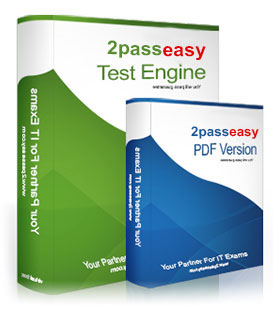1z0-1074 Guide
Most Up-to-date 1z0-1074 Exam Question For Oracle Cost Management Cloud 2021 Implementation Essentials Certification
It is more faster and easier to pass the Oracle 1z0-1074 exam by using Free Oracle Oracle Cost Management Cloud 2021 Implementation Essentials questuins and answers. Immediate access to the Down to date 1z0-1074 Exam and find the same core area 1z0-1074 questions with professionally verified answers, then PASS your exam with a high score now.
Also have 1z0-1074 free dumps questions for you:
NEW QUESTION 1
Identify four characteristics of a cost element.
- A. Users can define any number of cost elements.
- B. It is the most granular level of cost captured by upstream systems such as procurement, accounts payable, and manufacturing.
- C. It is the granularity at which costs are tracked and accounted.
- D. It is user-defined.
- E. The mapping of cost components into cost elements is user-defined.
- F. It uses date effectivity.
Answer: BDEF
NEW QUESTION 2
Which four predefined costing reports can you use to gatherinformation to review inventory value? (Choose four.)
- A. Costing Account Balances Report
- B. In-transit Valuation Report
- C. COGS and Revenue Matching Report
- D. Work in Process Inventory Valuation Report
- E. Layer Inventory Valuation Report
- F. Cost Accounting Valuation Report
- G. Inventory Valuation Report
Answer: ABCD
NEW QUESTION 3
Which predefined report should you use from Oracle Business Intelligence Publisher to manage the balance of accrued supplier liabilities for a business unit?
- A. Accrual Supplier Liability Report
- B. Accrual Reconciliation Report
- C. Accrual Clearing Report
- D. Uninvoiced Receipt Accrual Report
- E. Receipt Accounting Real Time Report
Answer: B
Explanation:
https://docs.oracle.com/cloud/farel12/scmcs_gs/FAPMA/FAPMA2269725.htm#FAPMA2269725
NEW QUESTION 4
Which four statements describe what is unique about Cost Accounting for items received into inventory as consigned?
- A. Consigned items cannot appear on inventory reports with information about the eventual value of the consigned item.
- B. There is no difference between owned inventory and consigned inventory.
- C. The liability for a consigned item occurs when there is an ownership event.
- D. A consumption can automatically trigger a momentary ownership transaction before the consumption transaction.
- E. The quantity is tracked in inventory but not as an asset until there is an ownership event
- F. Consigned items can appear on inventory reports with information about the eventual value of the consigned item
Answer: ABCF
NEW QUESTION 5
Identify three Landed Cost Management tasks.
- A. Capture Charges
- B. View Rolled Up Costs
- C. Manage Cost Scenarios
- D. Perform Allocations
- E. Create Accounting
- F. Review Journal Entries
Answer: ADE
Explanation:
https://docs.oracle.com/en/cloud/saas/supply-chain-management/18b/faims/implementing-landed-cost-managem
NEW QUESTION 6
Your organization currently has the August period for this year open. They want to be able to open the September period, while keeping August open. When you try to open the target period, August of this year, you get an error.
What must you do to meet your customer's requirement and resolve this error?
- A. Perform cost account validations for August in Manage Cost Accounting Periods
- B. Run the Transfer Transactions toCosting process.
- C. Close the August period; you can never have two open periods at the same time.
- D. Change the number of maximum open periods in Manage Cost Organization Relationships
Answer: B
NEW QUESTION 7
Identify two purposes of Sub ledger Accounting.
- A. to maintain backward compatibility
- B. to obtain detailed information for auditpurposes since all sub ledger accounting is at the detail level
- C. to calculate costs for transactions
- D. to create accounting strings that can be viewed and corrected just before they are transferred to the General Ledger
- E. to centralize accounting string generation across all modules
Answer: CD
NEW QUESTION 8
Identify three characteristics of cost component to cost element mapping.
- A. You cannot modify, duplicate, or create user-defined cost components.
- B. You can onlydefine one cost component to cost element mapping for an installation.
- C. It is one of the attributes you define as part of your cost profile definitions.
- D. It is user-defined.
- E. It lets you define how cost component level costs will map into cost elements.
Answer: CDE
Explanation:
https://fusionhelp.oracle.com/fscmUI/topic/TopicId_P_9392D04E277B3B45E040D30A68817A96
NEW QUESTION 9
Select the two valid relationships between subledger components.
- A. The accounting method holds the accounting rules by Event Class andEvent Type.
- B. The journal lines hold the journal entry rule sets.
- C. The accounting method groups journal entry rule sets by Event Class and Event Type.
- D. Journal entry rules are used to hold accounting rules.
- E. Journal entry rule sets hold journal rules and accounting rules.
Answer: DE
Explanation:
https://docs.oracle.com/cd/E51367_01/financialsop_gs/FAISL/F1456683AN11328.htm
NEW QUESTION 10
If the accounting method does not have an assigned chart of accounts (COA), which option is valid?
- A. Theaccounting method must have a mapping set to convert the accounts.
- B. Accounting rules cannot override the accounting method.
- C. The accounting method can be assigned to any ledger.
- D. Any secondary ledger that uses the method cannot have a COA.
- E. The accounting method may only be used by ledgers without a COA.
Answer: B
NEW QUESTION 11
You are verifying your distributions for yourtransactions. You Just ran the receipt accounting distribution process. However, your purchase order receipt is not showing up.
What do you need to do for your receipt to show up?
- A. Run the Transactions from Procurement to Costing process.
- B. Run theTransfer Costs from Payables to Cost Management process.
- C. Run the Create Accounting process.
- D. Run the Clear Receipt Accrual Balances process.
- E. Run the Transactions from Receiving to Costing process.
Answer: E
NEW QUESTION 12
Which four steps need to be completed to establish standard costs for a make item?
- A. Run preprocessor.
- B. Complete cost roll-up.
- C. Publish costs
- D. Export item costs.
- E. Add standard costs to a cost scenario.
- F. Create a new cost scenario.
Answer: ABCD
NEW QUESTION 13
Which statement is true regarding the cost cutoff date in Cost Accounting?
- A. It only affects whether or not you can process a cost adjustment.
- B. Transactions with a transaction date after the cost cutoff date will not be processed until the cost cutoffdate is changed to a date that is later than the transaction date.
- C. Transactions with a transaction date after the cost cutoff date will not be processe
- D. These transactions will never be processed in any subsequent cost processor run.
- E. Transactions with a transaction date before the cost cutoff date will not be processed until the cost cutoff date is changed to a date that is before the transaction date.
Answer: B
NEW QUESTION 14
You have an item with two work definitions. One work definition is production priority 1 and named Plan A. Another work definition is production priority 2 and named Plan B. In your cost planning scenario, you have specified the work definition selection criteria as name and then production priority, and you have defined the name as Plan B.
How will the application select the work definition?
- A. The scenario will choose the work definition that is production priority 1.
- B. The cost planning scenario will use both work definitions for the item.
- C. The application will generate an error because there are two work definitions for the same item.
- D. The application will use the work definition that isnamed Plan B.
- E. While you can have more than one work definition for the same item, the cost scenario has no way to unambiguously select one of them.
Answer: A
NEW QUESTION 15
Identify two reference types used to tie a receipt trade operation to an expense invoicefor landing.
- A. Internal requisition number
- B. Shipment number
- C. Expense invoice number
- D. Bill of Lading
- E. Receipt number
Answer: AB
NEW QUESTION 16
Which three features are included in Receipt Accounting?
- A. Analyze Standard Purchase Cost Variances
- B. Create ReceiptAccounting Distribution
- C. Review Item Costs
- D. Adjust Receipt Accrual Clearing Balances
- E. Review Journal Entries
Answer: BDE
Explanation:
https://docs.oracle.com/en/cloud/saas/supply-chain-management/r13-update17d/faims/implementing-receipt-acc
NEW QUESTION 17
The process to map the APinvoices to the trade operation charges has completed. Which entity did the application use to do this?
- A. Material Receipts
- B. Charge Names
- C. PreReference Types
- D. Routes
- E. Trade Operation Template
Answer: C
NEW QUESTION 18
You have made some changes to your subledger accounting setups for Costing and want to verify that the journal entries are showing up correctly.
How can you generate a report that allows you to see the subledger journal entries for transactions without actually transferring to the General Ledger?
- A. Run the Create Accounting for Costing process with the following parameters: • Accounting Mode = Draft •Report Style = Detail• Transfer to General Ledger = No • Post in General Ledger = No
- B. Run the Transfer Transactions from Inventory to Costing process with the following parameters: • Accounting Mode = Draft • Report Style = Detail • Transfer to General Ledger = No • Post in General Ledger = No
- C. Run the Create Cost Accounting Distribution process with the following parameters: • Accounting Mode = Draft • Report Style = Detail • Transfer to General Ledger = No • Post in General Ledger = No
- D. Run the Create Cost Accounting Distribution process with the following parameters: • Accounting Mode = Final • Report Style = No report• Transfer to General Ledger = No• Post in General Ledger = No
- E. Run the Create Accounting for Costing process with the following parameters: • Accounting Mode = Final • Report Style = No report• Transfer to General Ledger = No• Post in General Ledger = No
Answer: A
NEW QUESTION 19
Your customer has a defined financial route that is not the same as the physical route in that it involves intermediate nodes (internal business units) that are not part of the physical supply chain.
Which pair of tasks are required to define and associate routes in Landed Cost Management?
- A. Define the route in Cost and Profit Planning and associate with the Trade Operations Template in Landed Costs.
- B. Define the route in Functional Setup Manager and associate with Trade Operations in Landed Costs
- C. Define the route in Functional Setup Manager and associate with Manage Charge Invoice Associations in Landed Costs
- D. Define the route in Landed Costs and associate with the Trade Operations Template in Landed Costs.
- E. Define the route In Cost and Profit Planning and associate with Trade Operations in Landed Costs
Answer: A
NEW QUESTION 20
If the Create Accounting process ends with errors or warnings, which three statements outline places you can go to get more detailed information about the specific errors and warnings?
- A. Query the transaction from Review Cost Accounting Distributions to see the error message.
- B. Review errors in the Create Accounting Execution report.
- C. Refer to the Accounting Event Diagnostic report.
- D. Refer to the Accounting Event Diagnostic log.E Review errors in the Create Accounting Execution log.
Answer: B
NEW QUESTION 21
......
100% Valid and Newest Version 1z0-1074 Questions & Answers shared by Certshared, Get Full Dumps HERE: https://www.certshared.com/exam/1z0-1074/ (New 79 Q&As)
 To know more about the 1z0-1074, click here.
To know more about the 1z0-1074, click here.


